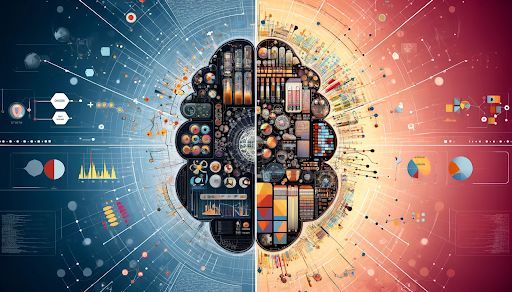In the rapidly evolving field of artificial intelligence, Natural Language Models (NLMs) and Large Language Models (LLMs) have emerged as powerful tools for businesses. Understanding the distinctions between these models is crucial for making informed decisions on their implementation in various business applications. This article aims to elucidate the differences between NLMs and LLMs, providing insights into their respective functionalities, advantages, and business implications.

Understanding NLMs
Natural Language Models (NLMs) are designed to understand, interpret, and generate human language. These models leverage Natural Language Processing (NLP) techniques to perform tasks such as text classification, sentiment analysis, and language translation. NLMs are typically smaller in scale compared to LLMs, focusing on specific tasks with high accuracy and efficiency. Common use cases of NLMs include chatbots, customer service automation, and document summarization.
Understanding LLMs
Large Language Models (LLMs) represent a more advanced iteration of language models, characterized by their vast scale and capacity to handle complex language tasks. LLMs are trained on extensive datasets, enabling them to generate coherent and contextually relevant text. They excel in tasks requiring deep understanding and generation of human language, such as writing assistance, content creation, and sophisticated conversational agents. The capabilities of LLMs extend beyond those of traditional NLMs, making them invaluable in scenarios demanding high-level language comprehension and generation.
Comparative Analysis
The primary differences between NLMs and LLMs can be summarized in terms of scale, functionality, and application scope. NLMs, being smaller and task-specific, are often faster and more efficient in their designated functions. They require less computational power and are easier to deploy in targeted applications. On the other hand, LLMs, with their extensive training and larger architectures, provide superior performance in complex language tasks but come with higher computational demands and implementation complexity.
Advantages of NLMs include their efficiency, lower cost, and specialized capabilities, making them suitable for businesses with specific language processing needs. LLMs offer broader and more versatile applications, excelling in creative and dynamic language tasks but at the cost of higher resource consumption. The choice between NLMs and LLMs depends on the specific requirements and resources of the business.
| Criteria | NLMs | LLMs |
| Scale | Smaller | Larger |
| Functionality | Task-specific | Broad and versatile |
| Computational Power | Lower | Higher |
| Cost | Lower | Higher |
| Applications | Chatbots, sentiment analysis | Content creation, conversational agents |
Business Implications
For businesses, the decision to implement NLMs or LLMs should be guided by the specific needs and goals of the organization. NLMs offer a cost-effective and efficient solution for businesses requiring specialized language processing capabilities. They are ideal for applications where speed and precision are paramount, such as customer service automation and document analysis.
LLMs, with their expansive capabilities, are suited for businesses aiming to leverage advanced language understanding and generation. They can enhance content creation processes, provide sophisticated writing assistance, and enable dynamic conversational agents that interact seamlessly with customers. However, the higher resource requirements and implementation complexity should be carefully considered.
Ultimately, the integration of NLMs and LLMs in business strategies offers significant potential to enhance operational efficiency, customer engagement, and innovation. By understanding the key differences and evaluating the specific business needs, organizations can make informed decisions to maximize the benefits of these powerful AI models.

Founder Dinis Guarda
IntelligentHQ Your New Business Network.
IntelligentHQ is a Business network and an expert source for finance, capital markets and intelligence for thousands of global business professionals, startups, and companies.
We exist at the point of intersection between technology, social media, finance and innovation.
IntelligentHQ leverages innovation and scale of social digital technology, analytics, news, and distribution to create an unparalleled, full digital medium and social business networks spectrum.
IntelligentHQ is working hard, to become a trusted, and indispensable source of business news and analytics, within financial services and its associated supply chains and ecosystems









